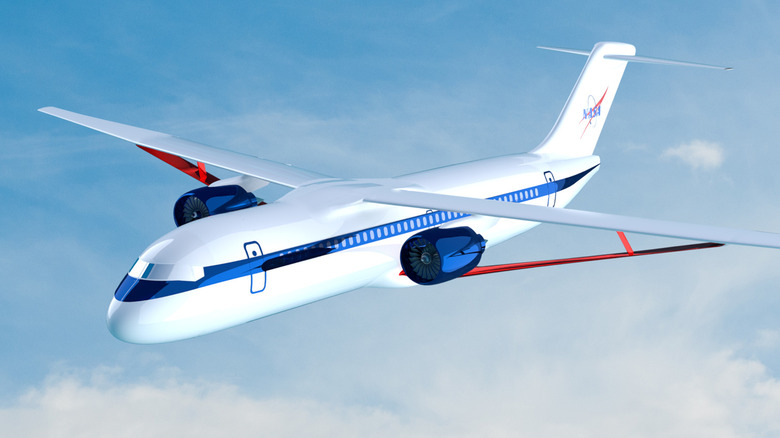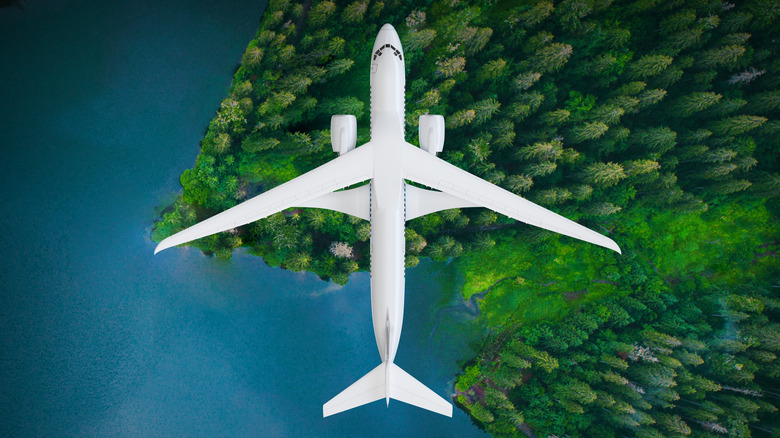This Is The X-66A: NASA's Next Highly-Experimental X-Plane
On Monday, NASA announced that the U.S. Air Force has a name for its latest experimental X-plane: the X-66A. Although NASA is typically associated with space exploration, the newest X-plane — developed in conjunction with Boeing through the agency's Sustainable Flight Demonstrator program — is aimed at revolutionizing the single-aisle jet which is a staple of passenger airlines around the world. Some common current examples of this style of jet include the Airbus A320 and Boeing 737 variants.
Due to their prevalence in commercial aviation, these single-aisle planes produce almost half of the aviation greenhouse gas emissions around the globe, so a move toward a more sustainable, climate-friendly, and energy-saving aircraft would have a widespread impact. Per NASA Administrator Bill Nelson, "The X-66A will help shape the future of aviation, a new era where aircraft are greener, cleaner, and quieter, and create new possibilities for the flying public and American industry alike."
To be clear, the X-66A is still in the earliest phases of development and is not expected to undergo test flights for at least five years, according to The Air Current.
The X-66A could burn 30% less fuel
A focal point of the NASA/Boeing collaboration will be a pair of thin, extra-long wings stabilized by diagonal struts, a concept known as a "Transonic Truss-Braced Wing." This slender wing design alone is expected to reduce fuel consumption by 9-10%. Coupled with advanced propulsion systems and lightweight materials, total fuel burn could be reduced by up to 30% versus the best-in-class from the current crop of aircraft.
The X-plane designation dates all the way back to the 1940s and NASA's predecessor, the National Advisory Committee for Aeronautics (NACA), which joined forces with the Air Force and the U.S. Navy to create experimental aircraft. With a goal of achieving net zero aviation emissions by the year 2050, the X-66A could be one of the most significant X-planes yet.
"With this experimental aircraft, we're aiming high to demonstrate the kinds of energy-saving, emissions-reducing technologies the aviation industry needs," said Bob Pearce associate administrator for NASA's Aeronautics Research Mission Directorate

